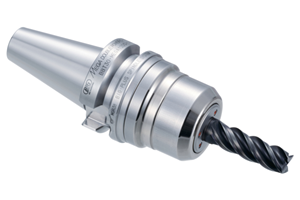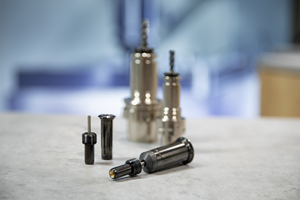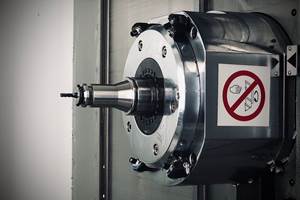Hard Milling With Tandem Toolholding
A combination of toolholding choices lets this die shop get the most performance from its small-diameter tools.
Share




Machining center users face an array of toolholder choices. The various clamping mechanisms—including setscrew, collet, shrink fit and hydraulic pressure—all aim to do roughly the same thing. That is, they aim to hold the shank of the tool both rigidly and concentrically.
However, the various mechanisms achieve those two goals to varying degrees in different applications. Moreover, proprietary tool clamping mechanisms from specific toolholder companies expand the range of choices even further. For a given job in a given shop, the right toolholder choice can be far from clear.
Impact Forge in Columbus, Indiana, faced multiple toolholding challenges all at once. The shop here runs small tools at long overhang lengths on jobs that involve not just restricted tool access, but also hard material.
Appropriately enough, the toolholding solution that this shop found consists of multiple tool clamping mechanisms working together.
Detail Work
The shop machines forging dies. Typically, the shop’s work consists of re-machining existing dies that have been repaired through flood welding. Process engineering programmer Doug Lynch explains that with hardness reaching as high as 50 Rc, the flood-welded dies are typically harder than the originals.
Roughing and finishing occur on either of two Okuma horizontal machining centers. Roughing generally involves a 1-inch diameter end mill in a setscrew holder. Finishing provides the greater toolholding challenges, with the fine details of the dies calling for end mills as small as 0.030 inch in diameter. At the same time, deep cavities and small relief angles for the cavity walls require a toolholding solution slender enough to let these small tools get close to the walls to do their work.
The shop formerly used slender shrink-fit toolholders for this purpose. With no moving parts, a shrink-fit holder uses thermal expansion and contraction. The holder is heated to open the bore, which then shrinks during cooling to clamp around the tool. Shrink fit offers a way to hold the tiny tools to a tight level of concentricity in a holder with a slender profile.
The problem, Mr. Lynch says, is that shrink fit’s clamping force is proportional to the amount of expansion and contraction, which is proportional to the size of the bore. Bores small enough to accommodate the shop’s small tools have relatively light clamping force. The shop discovered that it might achieve more aggressive cutting with its small-diameter end mills from Melin (Cleveland, Ohio), except that the shrink-fit holders would let go of the tiny tools if the cutting force became too high. In other words, the machining center and the tool could do the work, but the toolholder was the limiting factor.
Part of the solution the shop found was the “Tribos” system from Schunk (Morrisville, North Carolina). This system uses metal spring-back to clamp the tool in a way that is similar to shrink fit, except that it uses mechanical force to open the bore instead of heat.
The other part of Impact Forge’s solution was to hold a Tribos extension within a hydraulic toolholder.
Longer Life
The photo on the next page shows the Tribos system’s clamping device. The toolholder’s bore has a natural shape that is considerably distorted from being a perfect circle. Instead, the shape has three lobes. The clamping device applies force to the toolholder to push this shape closer to being a circle. While the toolholder is held in this way, the tool can be inserted. Releasing the force then lets the toolholder spring back, concentrically clamping the tool.
With this system holding the tool, Impact Forge can run one of the 0.030-inch Melin ballnose tools in 50 Rc steel at 8,500 rpm, 20 ipm and 0.003-inch depth of cut. The shop was unable to reliably maintain parameters such as these when holding the small tool with shrink fit, Mr. Lynch says. Slender Tribos extensions bring these tools deep into cavities in the vicinity of the tight reliefs. However, these extensions also had to be held—they needed a toolholder. For this, he says another Tribos holder was not the best choice.
Indeed, when it came to holding the extensions that hold the tools, the shop discovered that any of the clamping mechanisms generating force from the springiness of metal—including shrink fit and collets—paled in comparison with what the shop was able to achieve with a hydraulic holder. Using hydraulic clamping to hold the Tribos extensions permitted 3 to 4 times more tool life than using a collet system to hold the same extension and tool.
A hydraulic toolholder uses hydraulic pressure to deliver its force. The toolholder contains a reservoir of hydraulic fluid. By tightening a screw, the user applies pressure to this fluid, and that pressure is in turn distributed around the metal sleeve, or bush, that holds the tool’s shank. The compression of this flexible bush clamps the tool. In addition, the hydraulic fluid provides vibration damping as a secondary benefit. Mr. Lynch credits this damping for the tool life improvement.
The shop uses “Tendo” hydraulic toolholders, also from Schunk. With other hydraulic toolholders he has considered, Mr. Lynch says the life of the holder provided as much cause for concern as the life of the tool. Accidentally tightening the holder while it was empty could compress the bush too far, ruining the holder. The Tendo design prevents this problem, he says, because the screw is simply tightened to a preset stop to trigger the hydraulic pressure with a separate mechanism. As a result, no torque wrench is needed, and tightening the toolholder while empty is no problem.
Related Content
Big Daishowa Chuck Eliminates Chatter in Milling Operations
The Mega 12DS chuck is designed for trochoidal milling with anti-vibration end mills.
Read MoreRego-Fix Toolholding System Reduces Coolant Consumption
MQL PG collets are designed for machines using one-channel, internal through-spindle MQL systems.
Read MoreSimulation and Tooling Secure High-Value Work
Simulation software and careful attention to tooling parameters have enabled Major Tool to take on ambitious projects with its complex machinery.
Read MoreHow to Troubleshoot Issues With Tool Life
Diagnosing when a tool is failing is important because it sets an expectation and a benchmark for improvements. Finding out why gives us a clue for how to fix it.
Read MoreRead Next
Building Out a Foundation for Student Machinists
Autodesk and Haas have teamed up to produce an introductory course for students that covers the basics of CAD, CAM and CNC while providing them with a portfolio part.
Read More5 Rules of Thumb for Buying CNC Machine Tools
Use these tips to carefully plan your machine tool purchases and to avoid regretting your decision later.
Read MoreSetting Up the Building Blocks for a Digital Factory
Woodward Inc. spent over a year developing an API to connect machines to its digital factory. Caron Engineering’s MiConnect has cut most of this process while also granting the shop greater access to machine information.
Read More













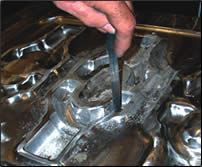

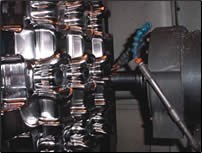











.png;maxWidth=300;quality=90)




